Abstract
1. Experiments were designed to show whether elements of the command descending from higher centres to exercising muscles provide an input for cardiovascular and respiratory control. Vibration, known to be a powerful stimulus to the primary afferents from muscle spindles, was applied to the biceps tendon of human subjects performing sustained isometric contractions with the biceps or the triceps muscle. When the biceps was contracting this activation of muscle spindle primary afferents in it provided an element of reflex excitation, so that less central command was required to achieve a given tension. When triceps was contracting, the activation of muscle spindle primary afferents in its antagonist, biceps, contributed an element of reflex inhibition, so that more central command than normally was required to achieve a given tension. The cardiovascular and respiratory responses to an isometric effort could thus be investigated at any tension when the central command was normal, decreased, or increased.
2. Blood pressure, heart rate, and pulmonary ventilation all increase in an isometric effort. The increase in each is less when the central command is reduced. The increase in each is greater when the central command is increased.
3. It is concluded that there is irradiation of cardiovascular and respiratory control centres by the descending central command during voluntary muscular contractions in man.
Full text
PDF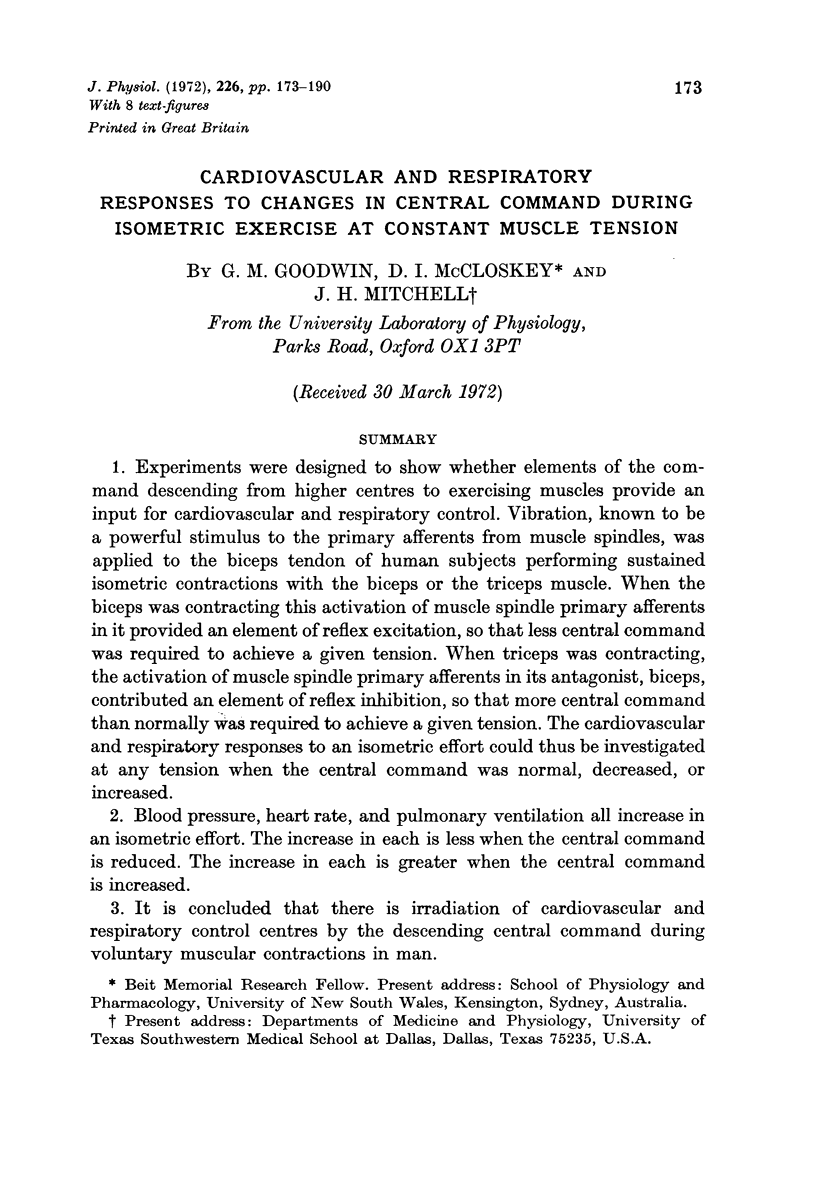
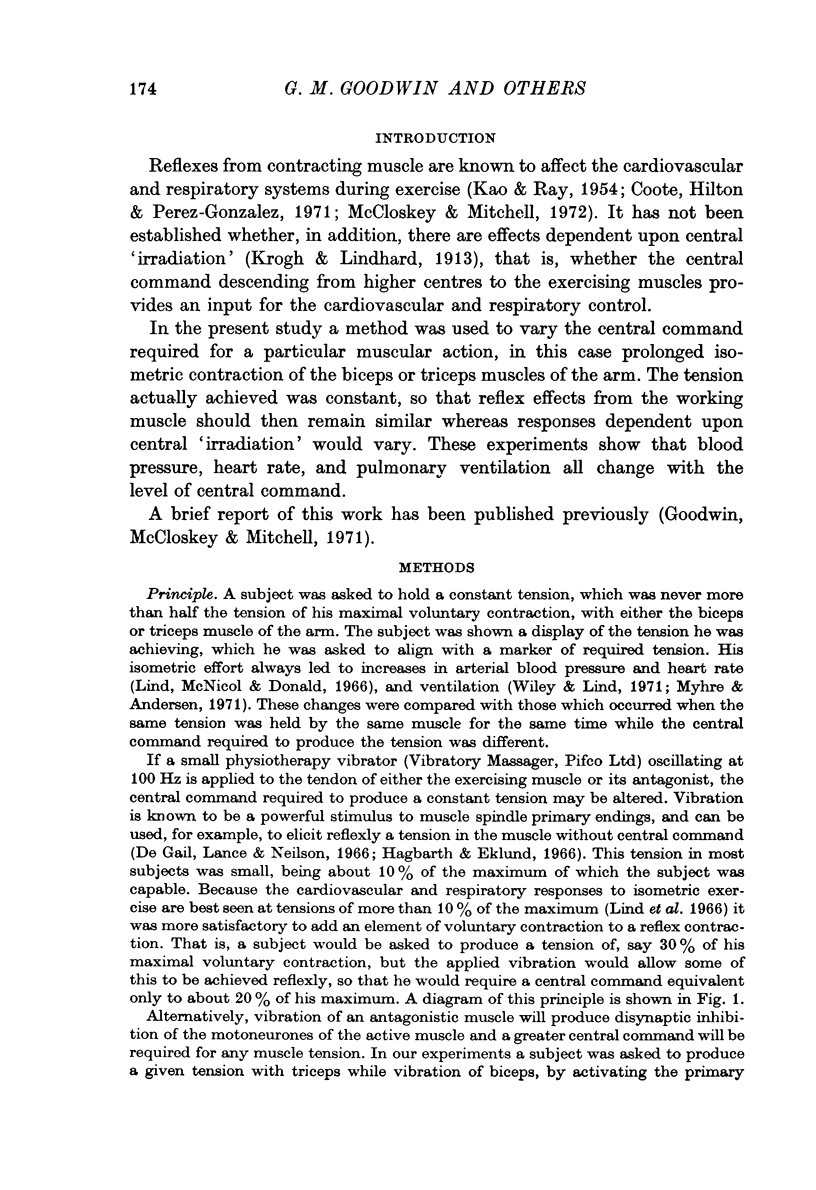
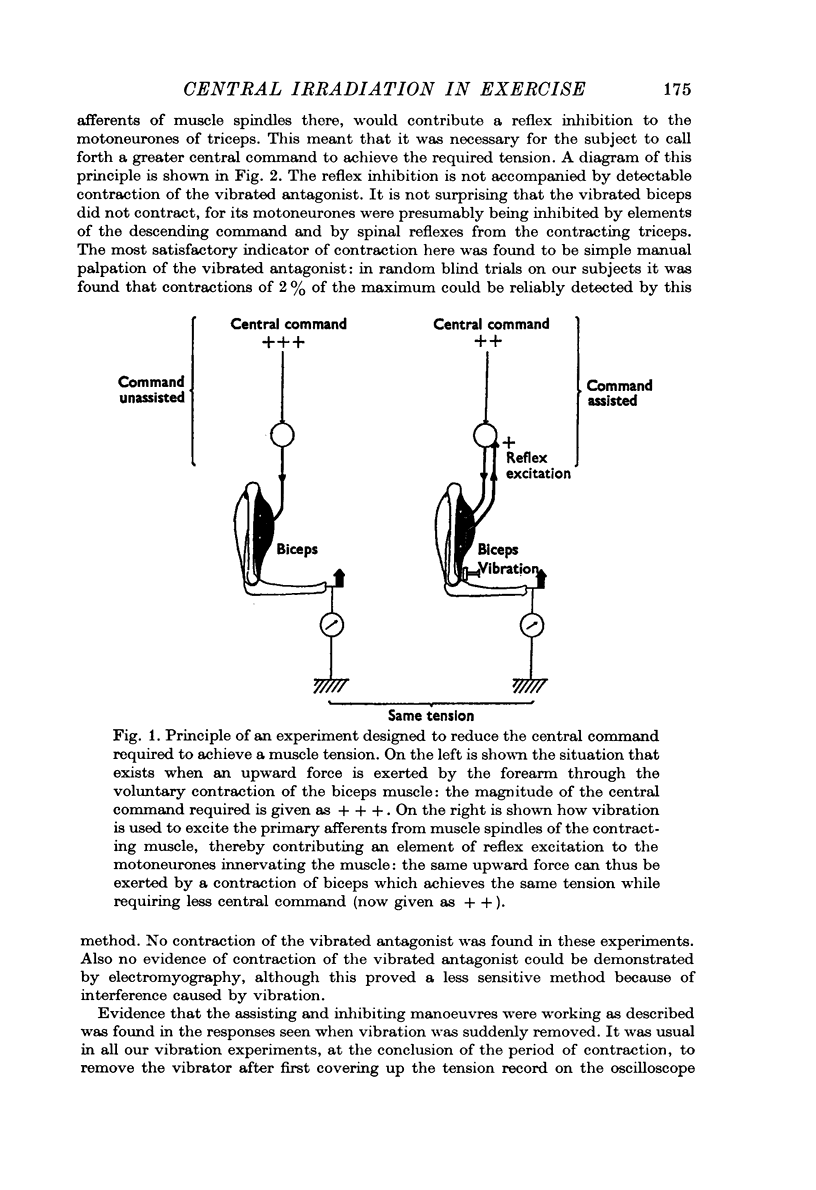
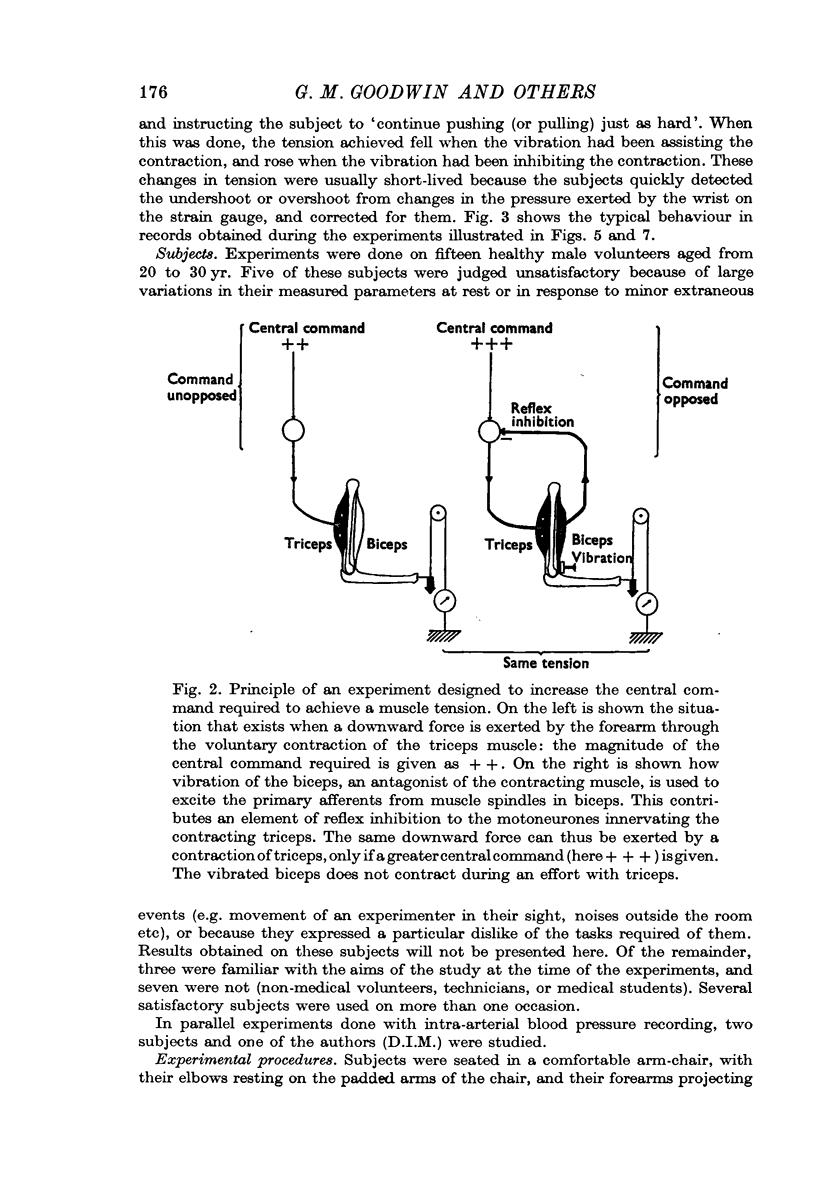
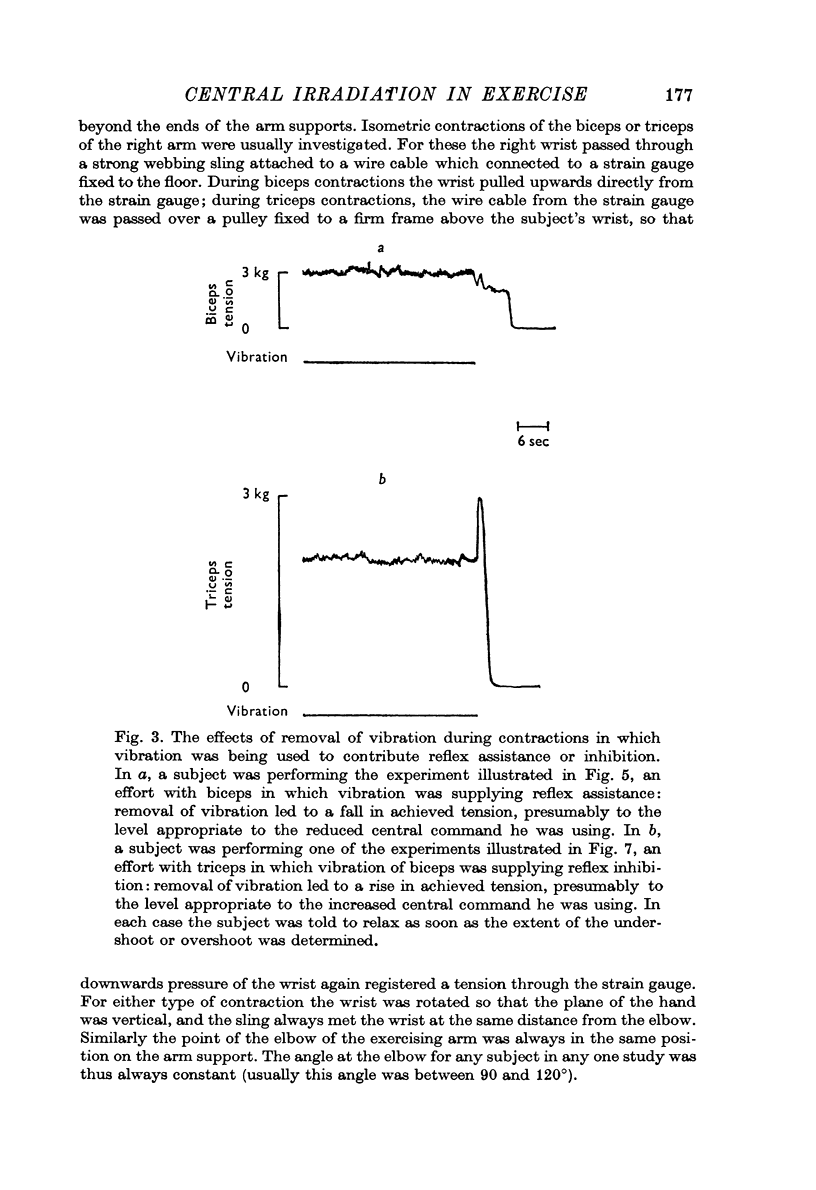
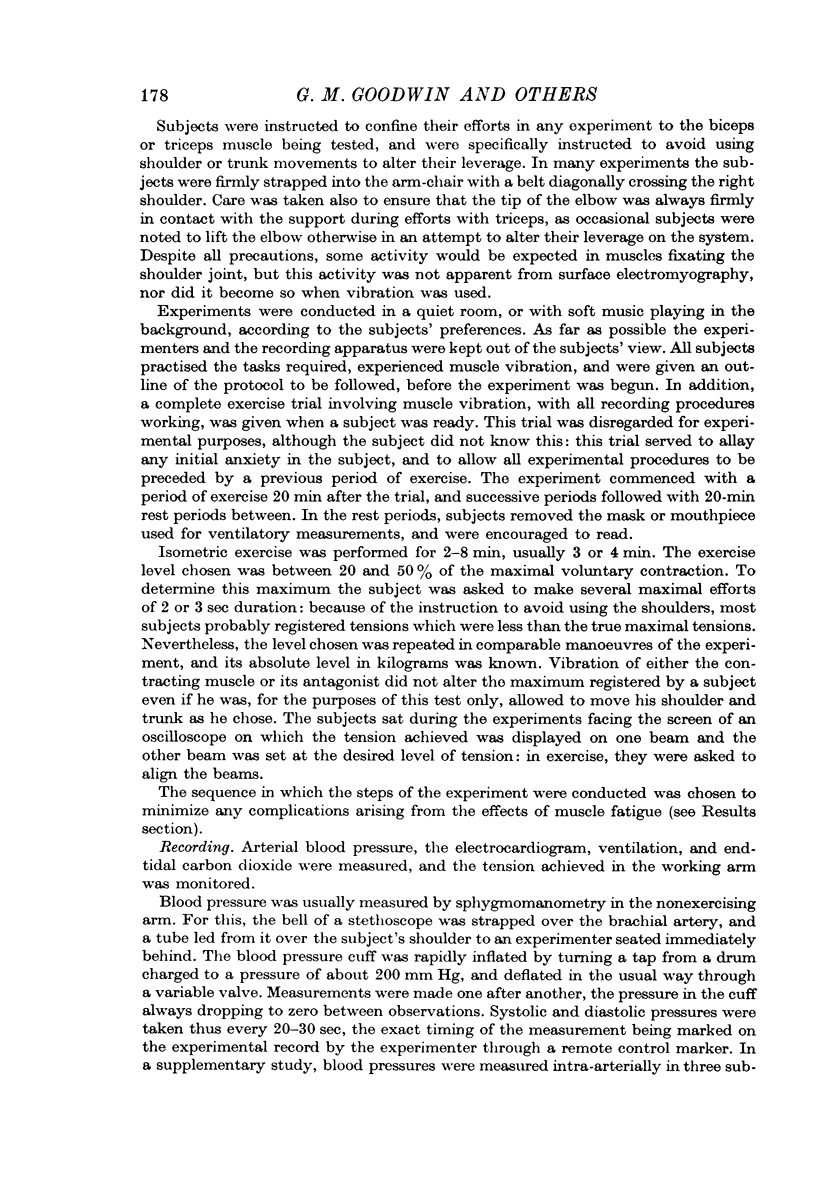
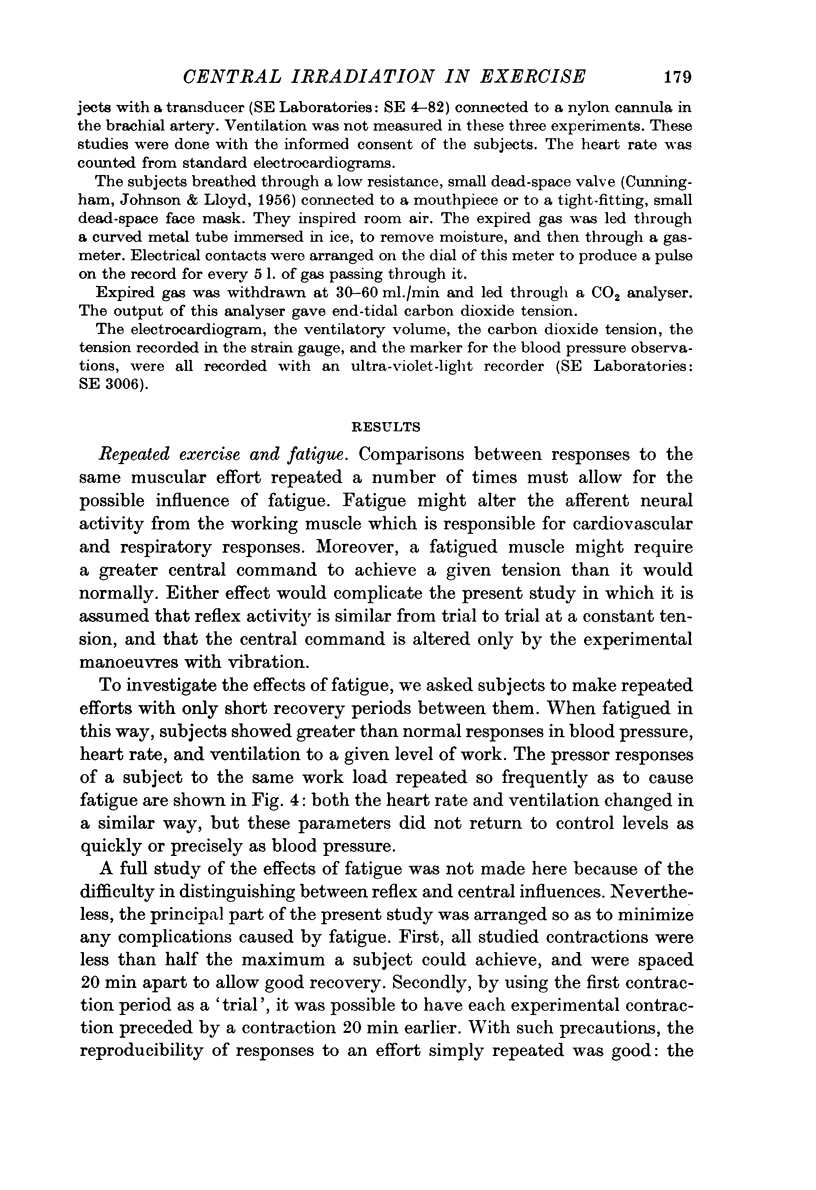
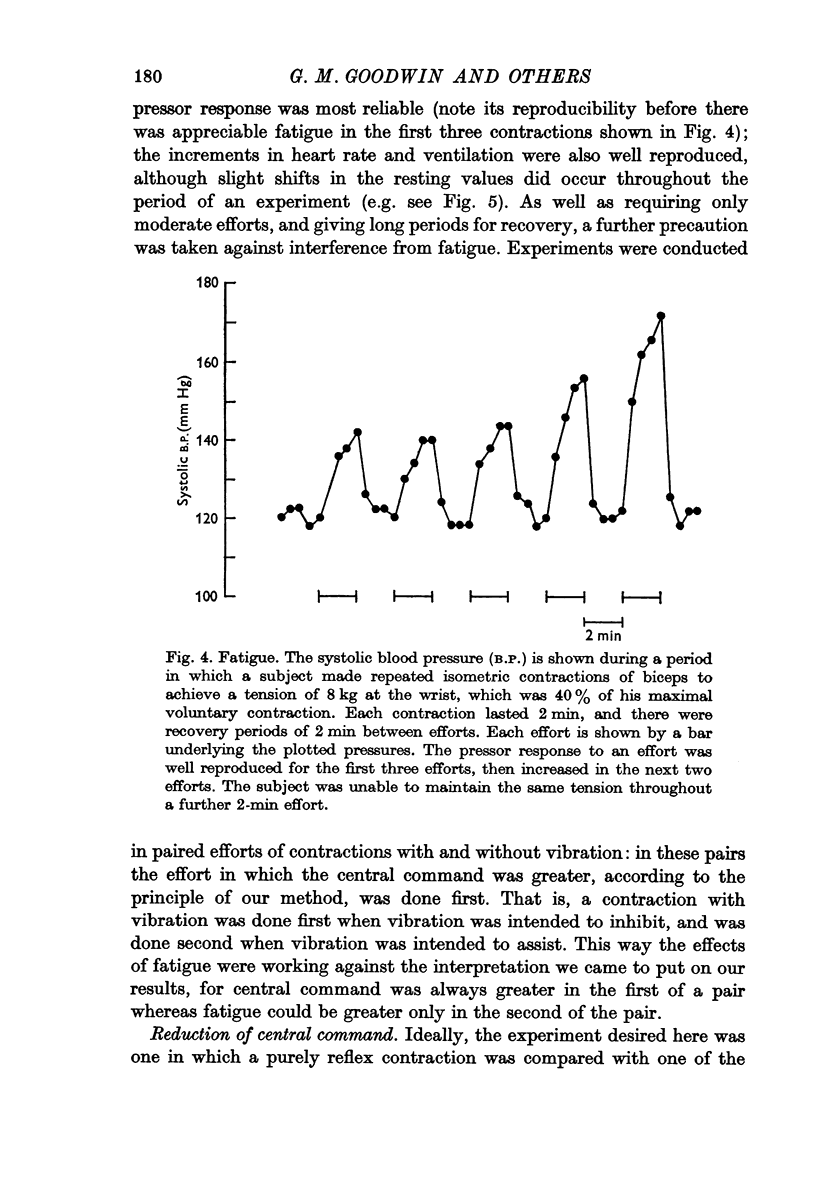
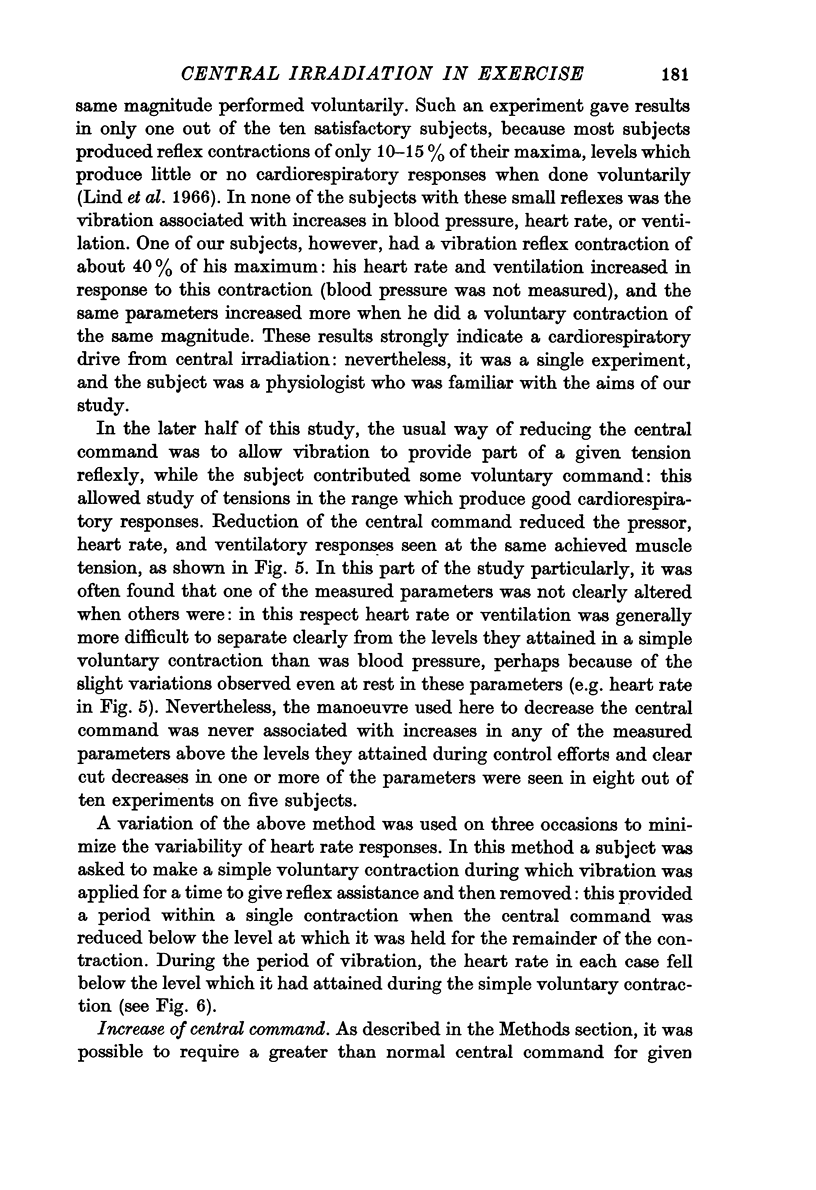
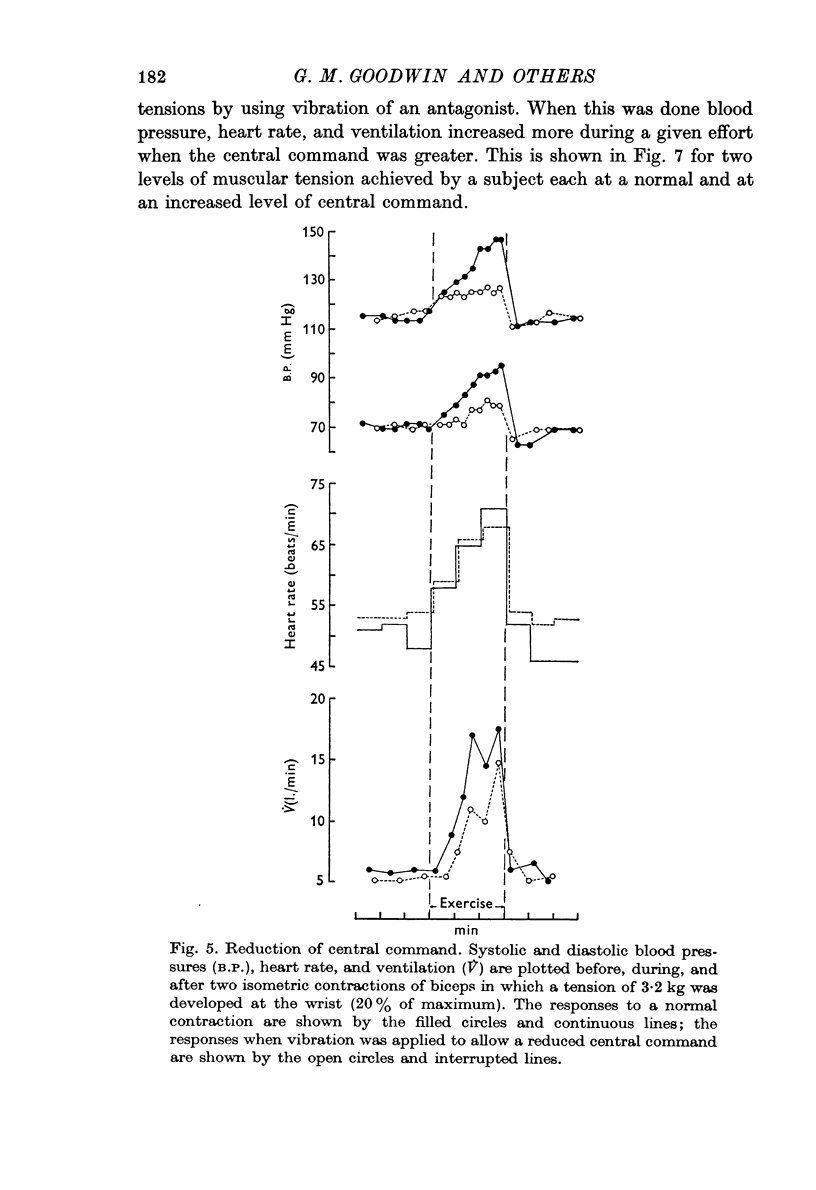
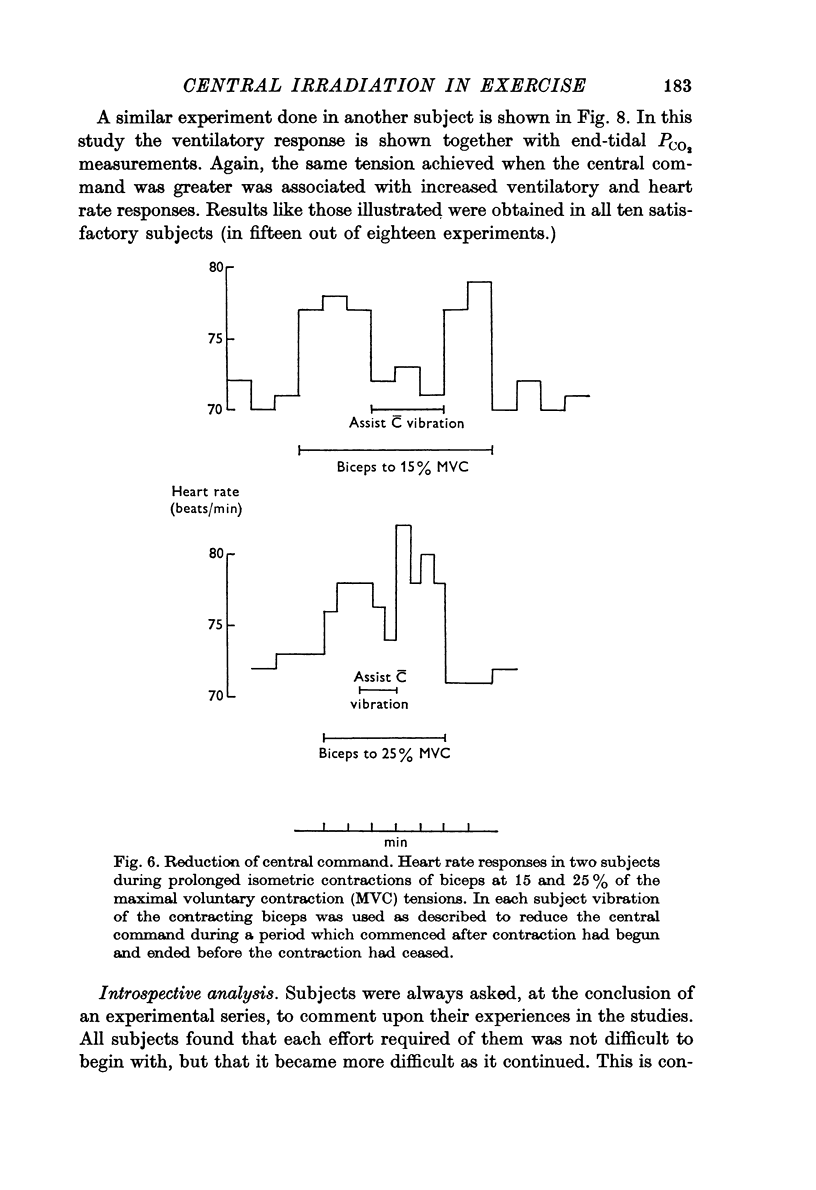
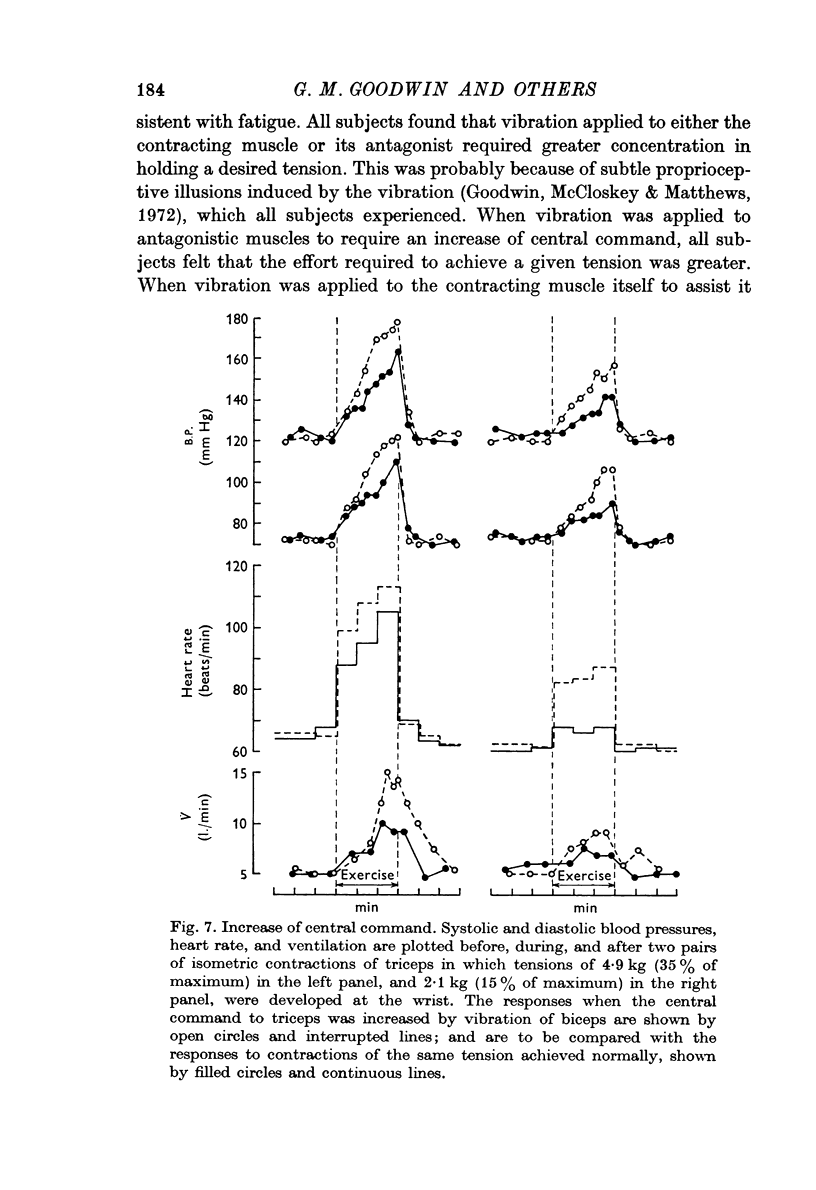
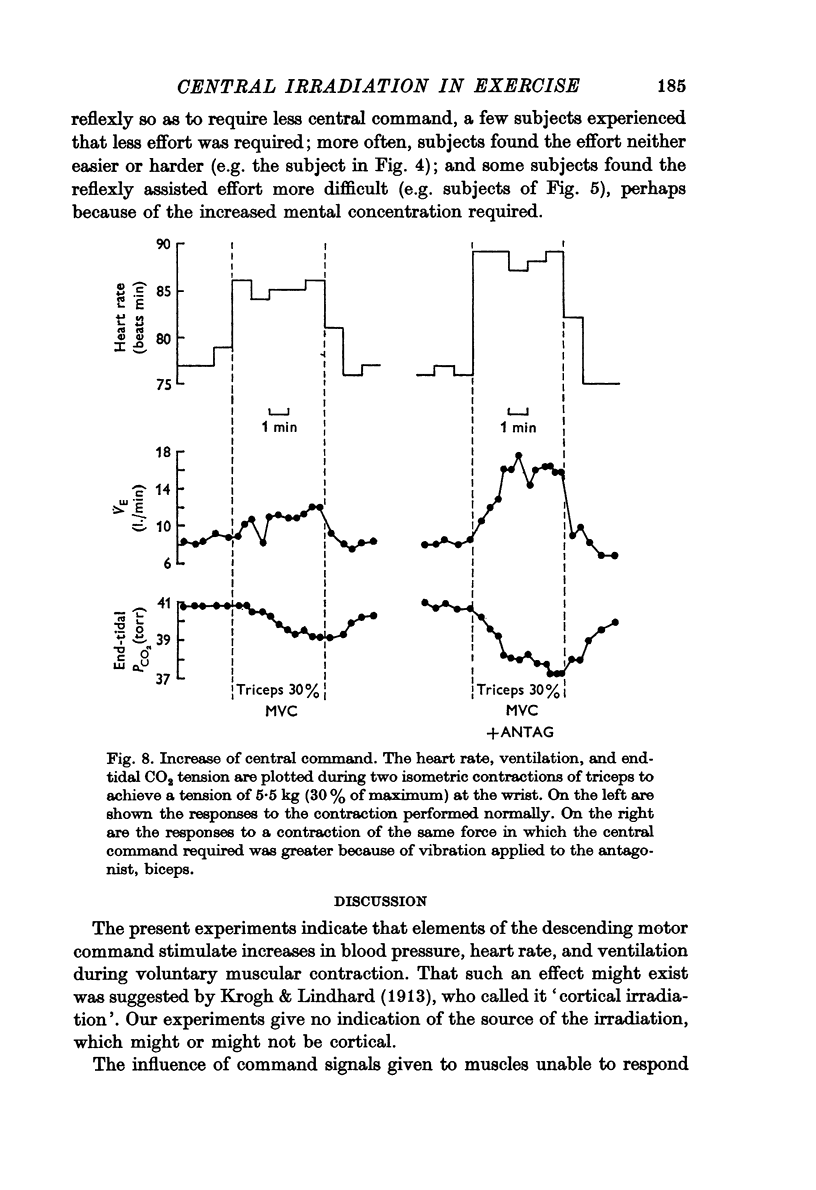
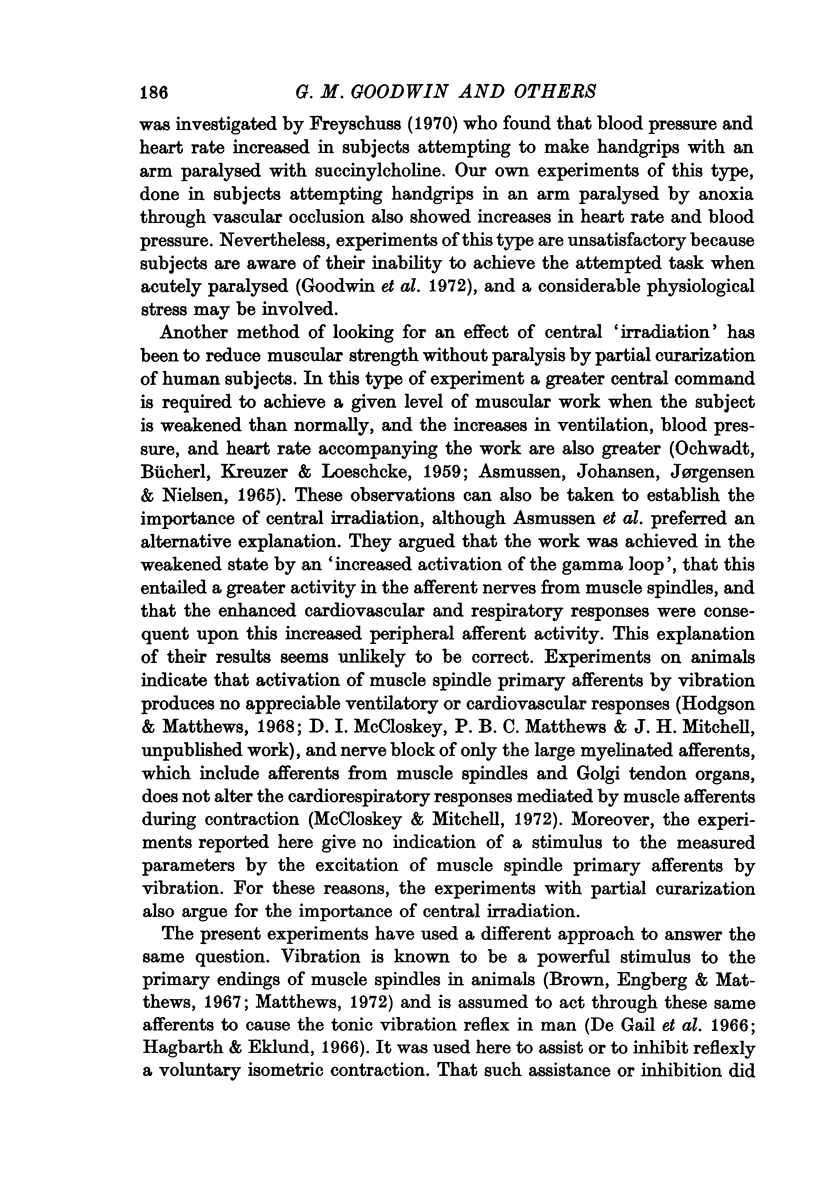
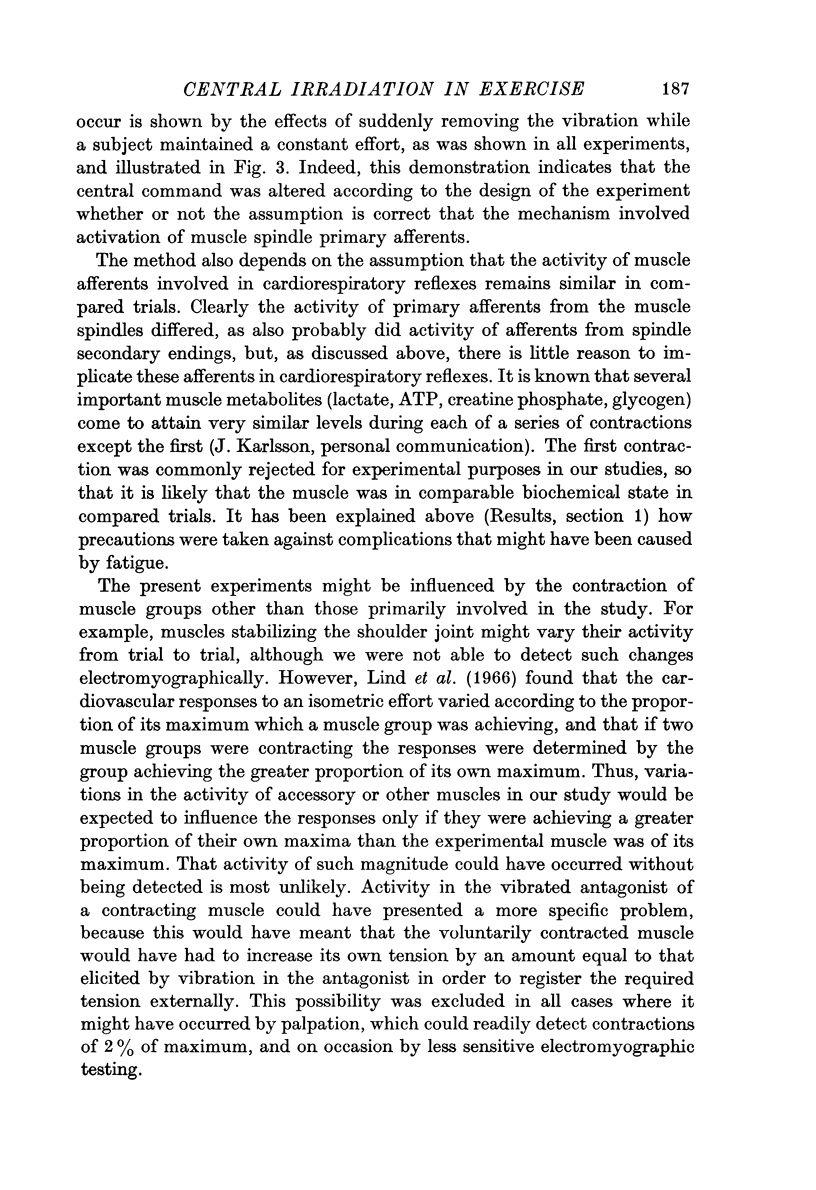
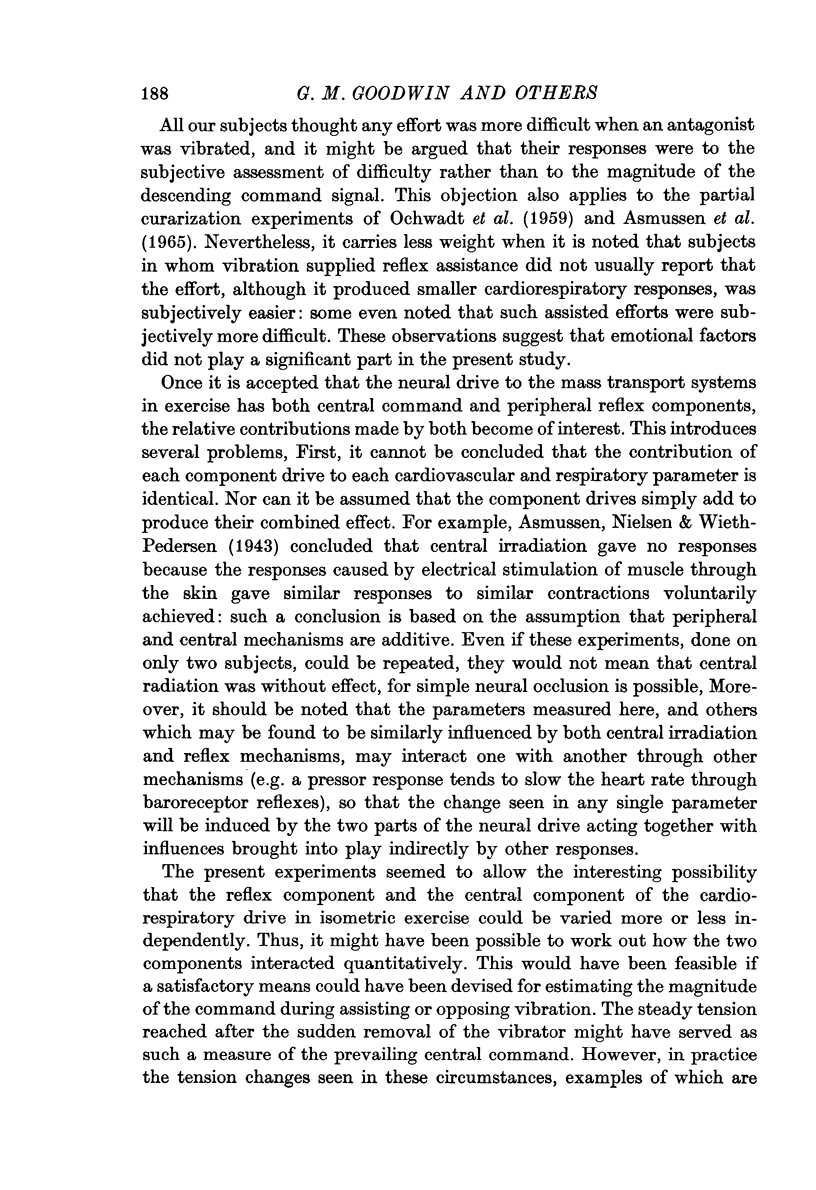
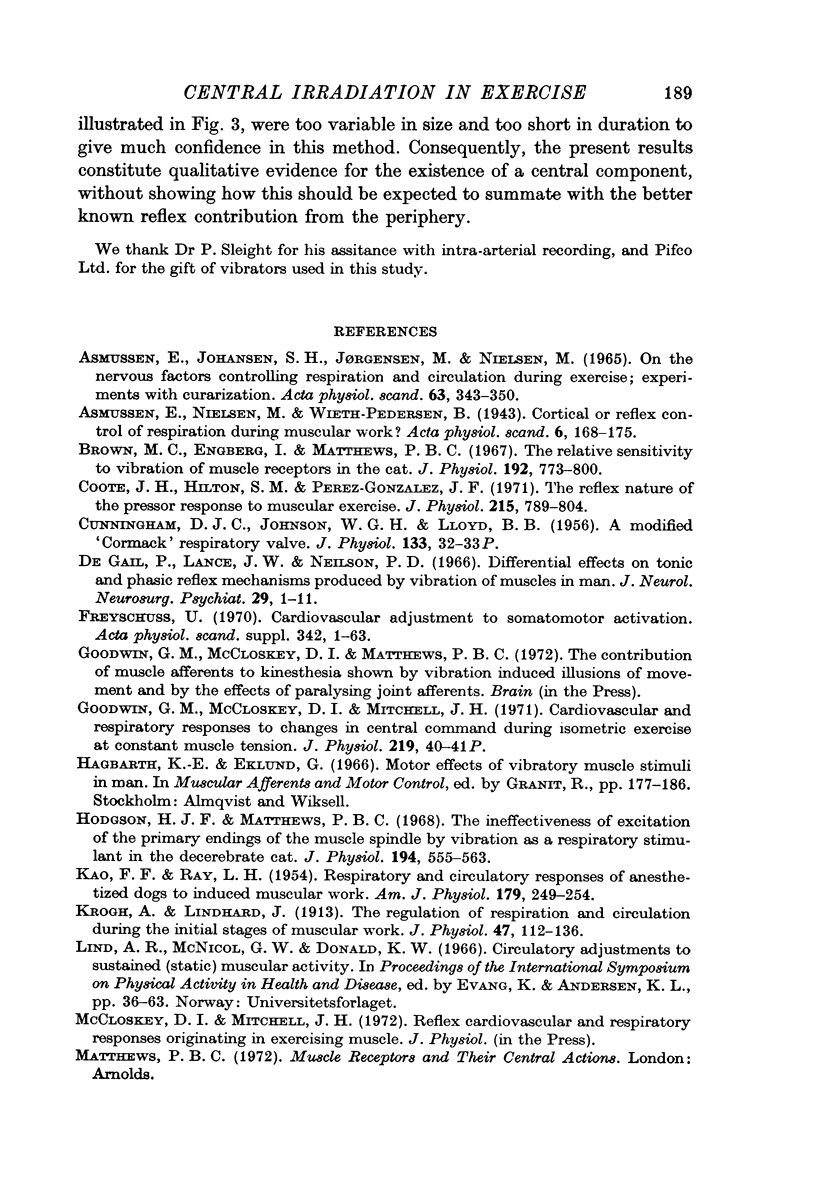
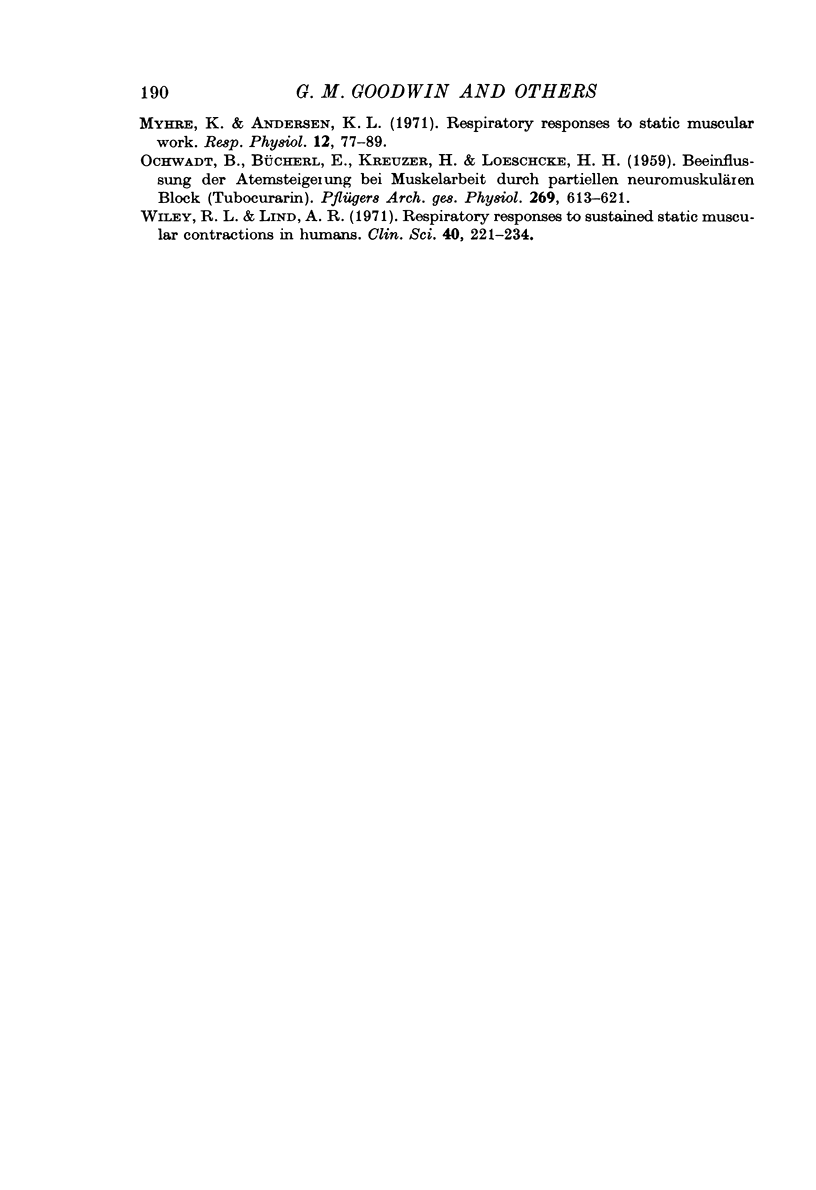
Selected References
These references are in PubMed. This may not be the complete list of references from this article.
- ASMUSSEN E., JOHANSEN S. H., JORGENSEN M., NIELSEN M. ON THE NERVOUS FACTORS CONTROLLING RESPIRATION AND CIRCULATION DURING EXERCISE. EXPERIMENTS WITH CURARIZATION. Acta Physiol Scand. 1965 Mar;63:343–350. doi: 10.1111/j.1748-1716.1965.tb04073.x. [DOI] [PubMed] [Google Scholar]
- Brown M. C., Engberg I., Matthews P. B. The relative sensitivity to vibration of muscle receptors of the cat. J Physiol. 1967 Oct;192(3):773–800. doi: 10.1113/jphysiol.1967.sp008330. [DOI] [PMC free article] [PubMed] [Google Scholar]
- Coote J. H., Hilton S. M., Perez-Gonzalez J. F. The reflex nature of the pressor response to muscular exercise. J Physiol. 1971 Jul;215(3):789–804. doi: 10.1113/jphysiol.1971.sp009498. [DOI] [PMC free article] [PubMed] [Google Scholar]
- De Gail P., Lance J. W., Neilson P. D. Differential effects on tonic and phasic reflex mechanisms produced by vibration of muscles in man. J Neurol Neurosurg Psychiatry. 1966 Feb;29(1):1–11. doi: 10.1136/jnnp.29.1.1. [DOI] [PMC free article] [PubMed] [Google Scholar]
- Hodgson H. J., Matthews P. B. The ineffectiveness of excitation of the primary endings of the muscle spindle by vibration as a respiratory stimulant in the decerebrate cat. J Physiol. 1968 Feb;194(2):555–563. doi: 10.1113/jphysiol.1968.sp008424. [DOI] [PMC free article] [PubMed] [Google Scholar]
- KAO F. F., RAY L. H. Respiratory and circulatory responses of anesthetized dogs to induced muscular work. Am J Physiol. 1954 Nov;179(2):249–254. doi: 10.1152/ajplegacy.1954.179.2.249. [DOI] [PubMed] [Google Scholar]
- Krogh A., Lindhard J. The regulation of respiration and circulation during the initial stages of muscular work. J Physiol. 1913 Oct 17;47(1-2):112–136. doi: 10.1113/jphysiol.1913.sp001616. [DOI] [PMC free article] [PubMed] [Google Scholar]
- Myhre K., Andersen K. L. Respiratory responses to static muscular work. Respir Physiol. 1971 Apr;12(1):77–89. doi: 10.1016/0034-5687(71)90103-4. [DOI] [PubMed] [Google Scholar]
- OCHWADT B., BUECHERL E., KREUZER H., LOESCHCKE H. H. [Modification of respiratory increase in muscular work by partial neuromuscular block (tubocurarine)]. Pflugers Arch Gesamte Physiol Menschen Tiere. 1959;269:613–621. [PubMed] [Google Scholar]
- Wiley R. L., Lind A. R. Respiratory responses to sustained static muscular contractions in humans. Clin Sci. 1971 Mar;40(3):221–234. doi: 10.1042/cs0400221. [DOI] [PubMed] [Google Scholar]


